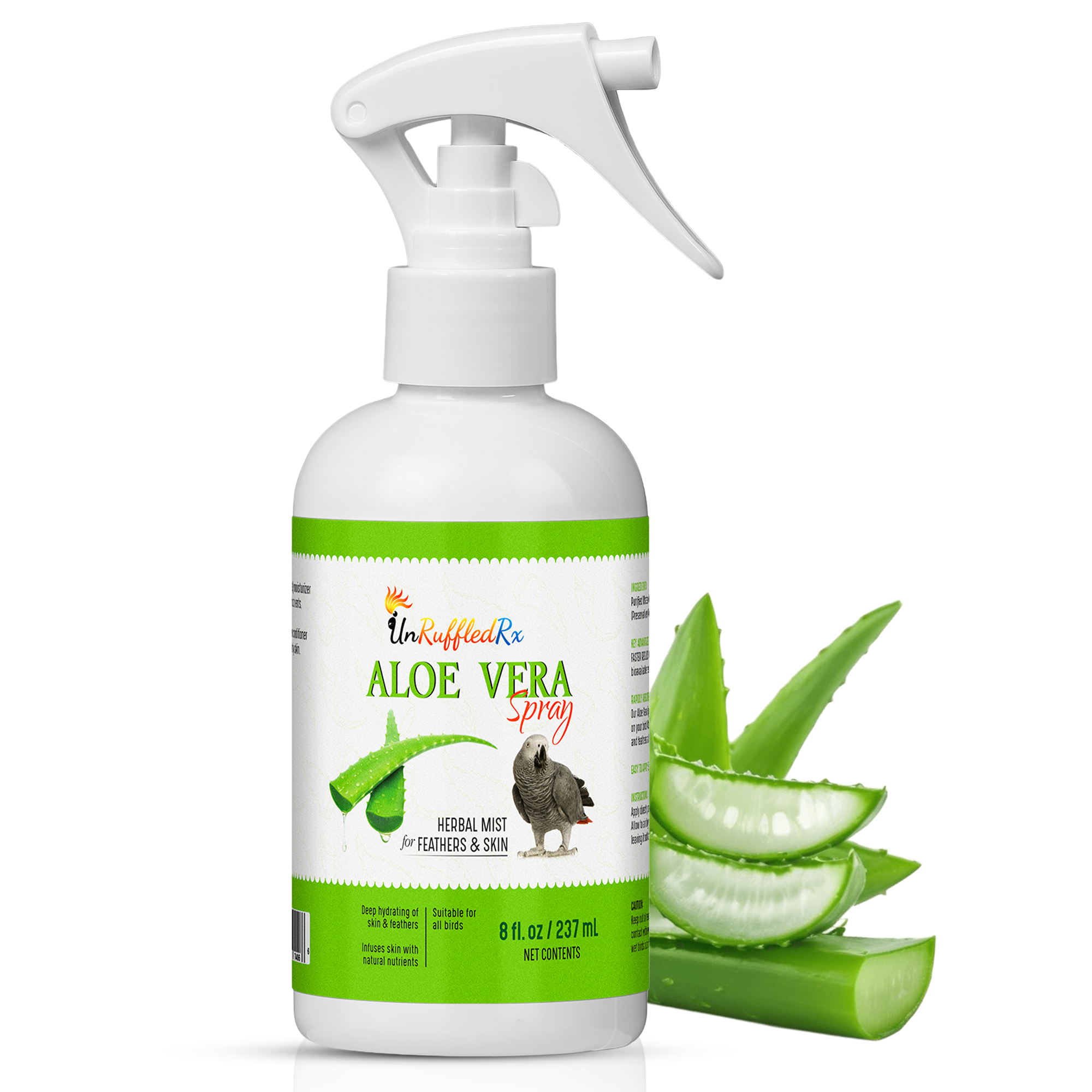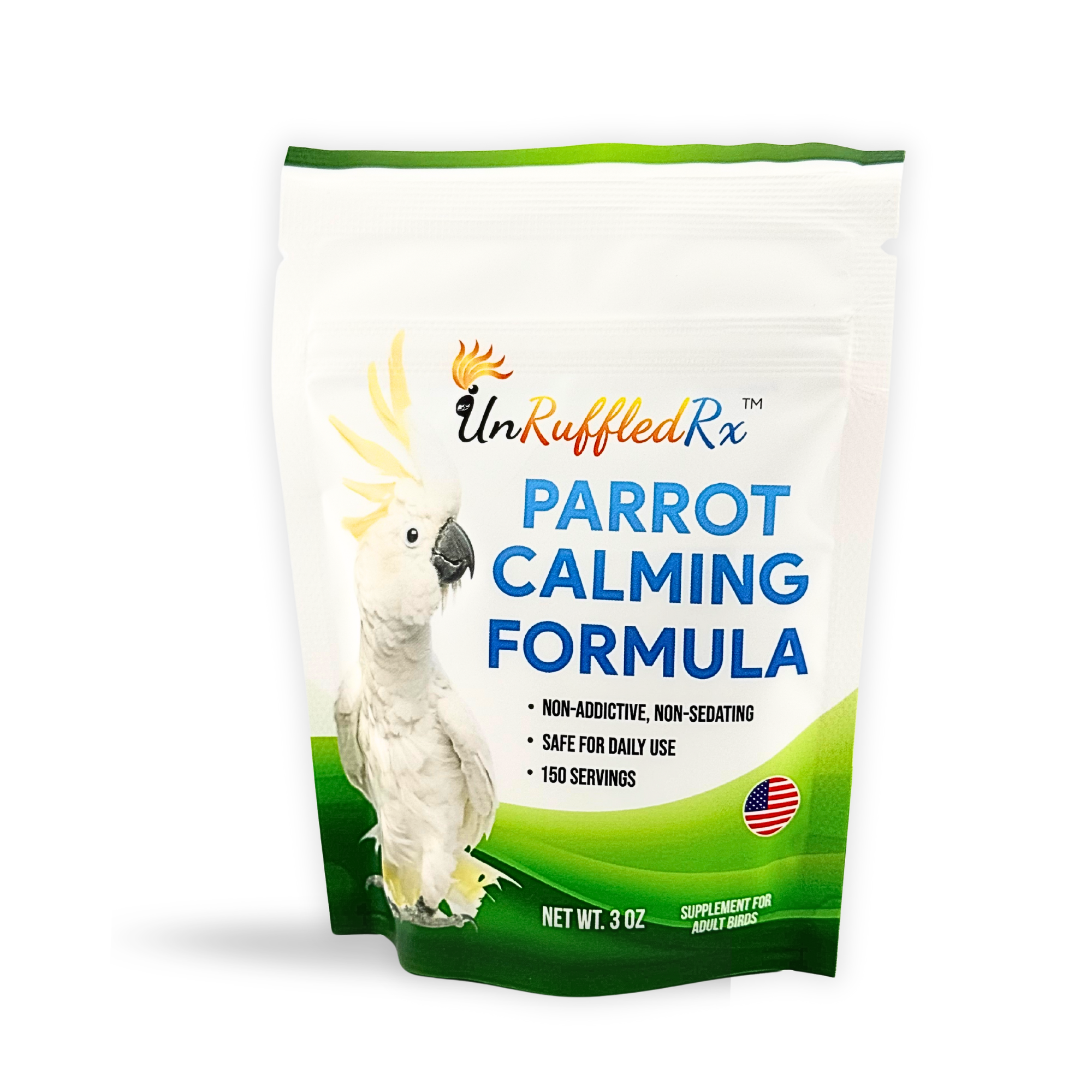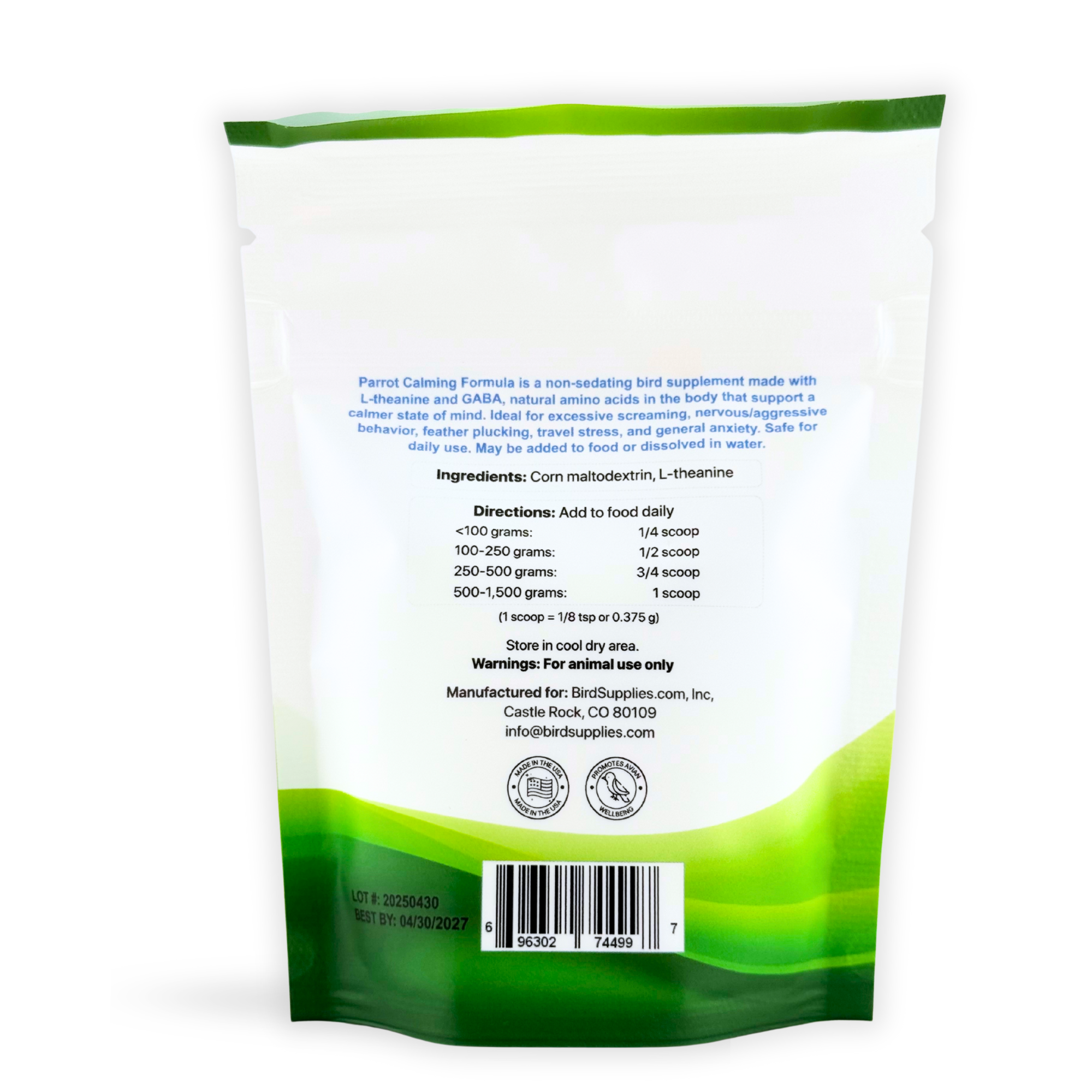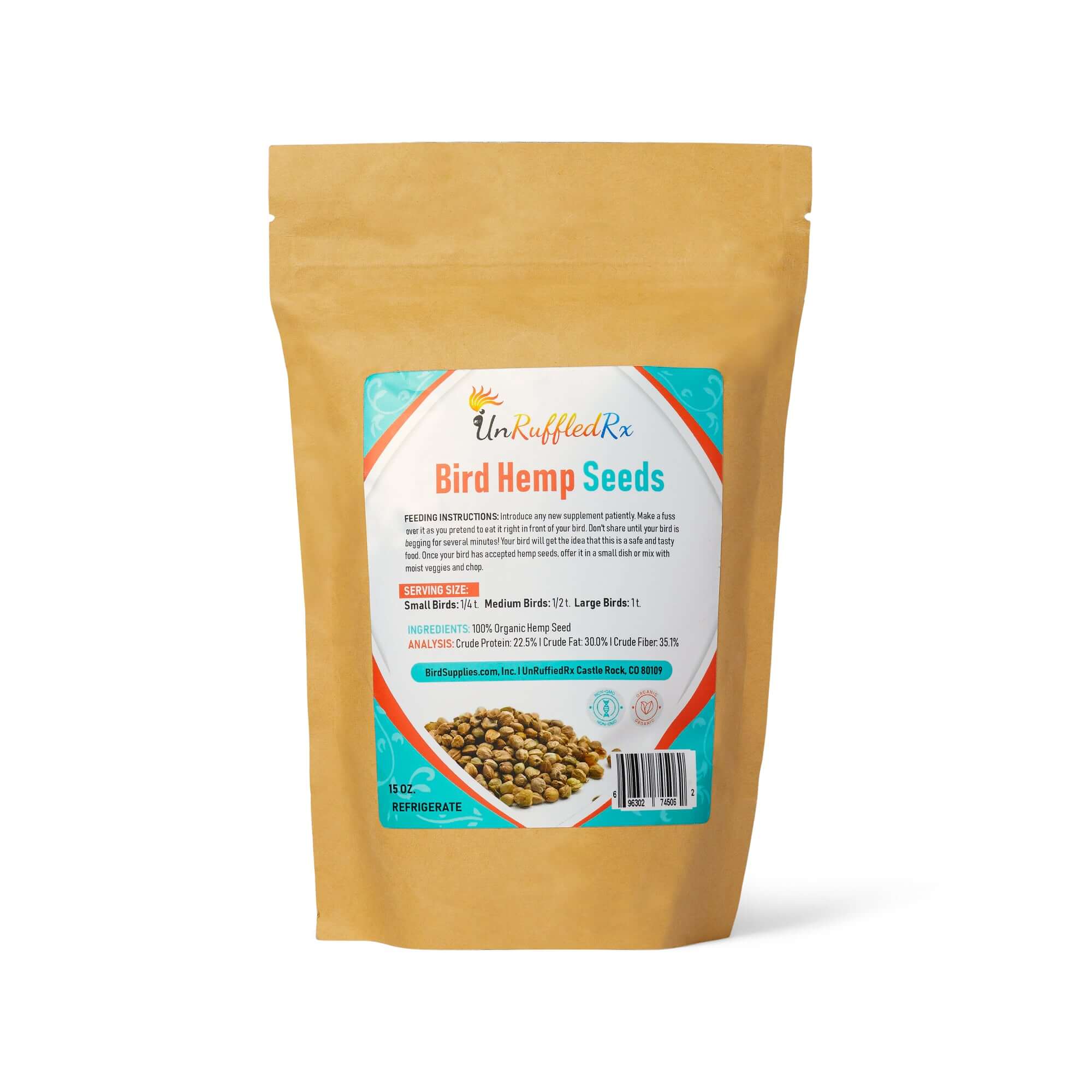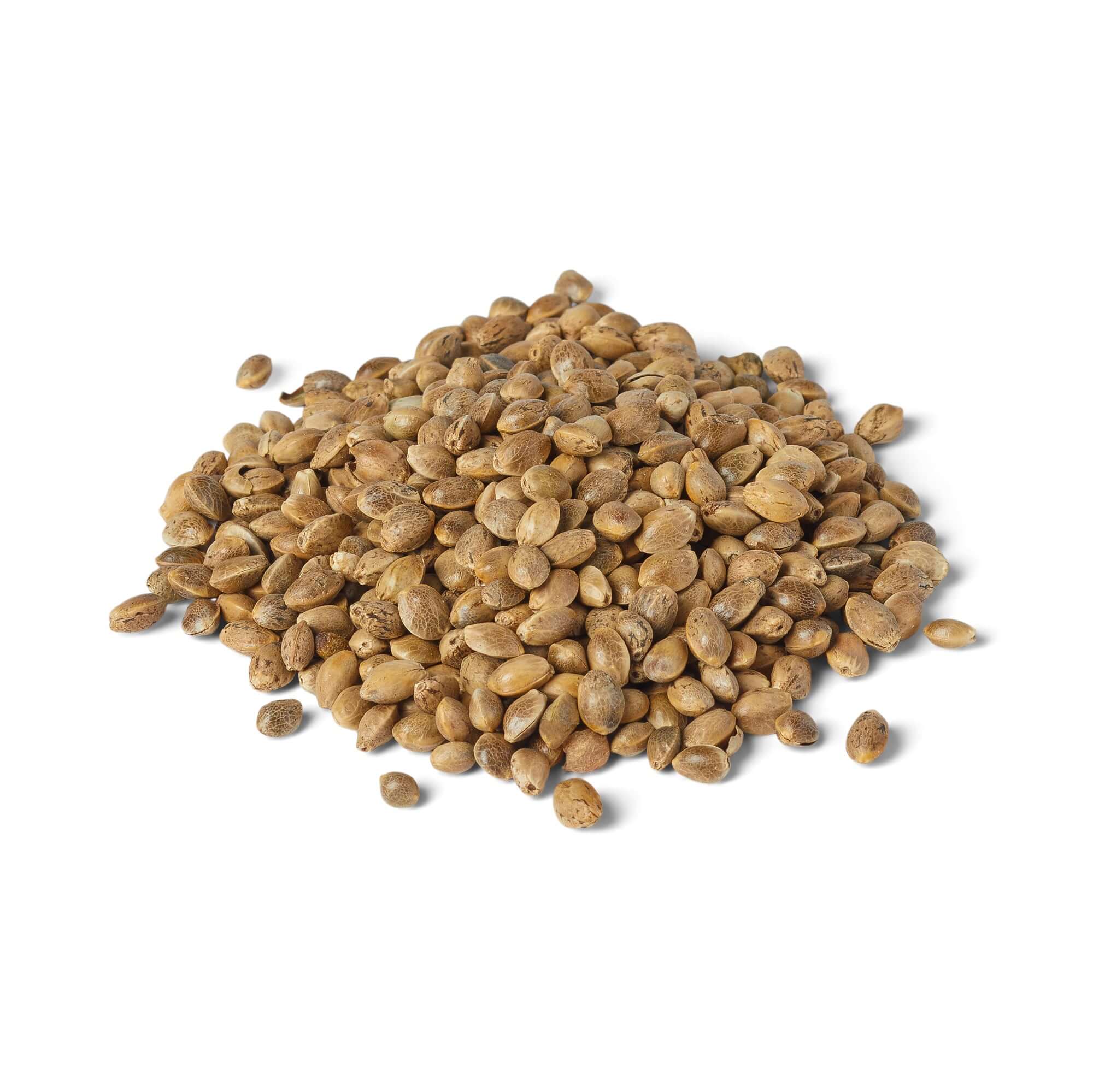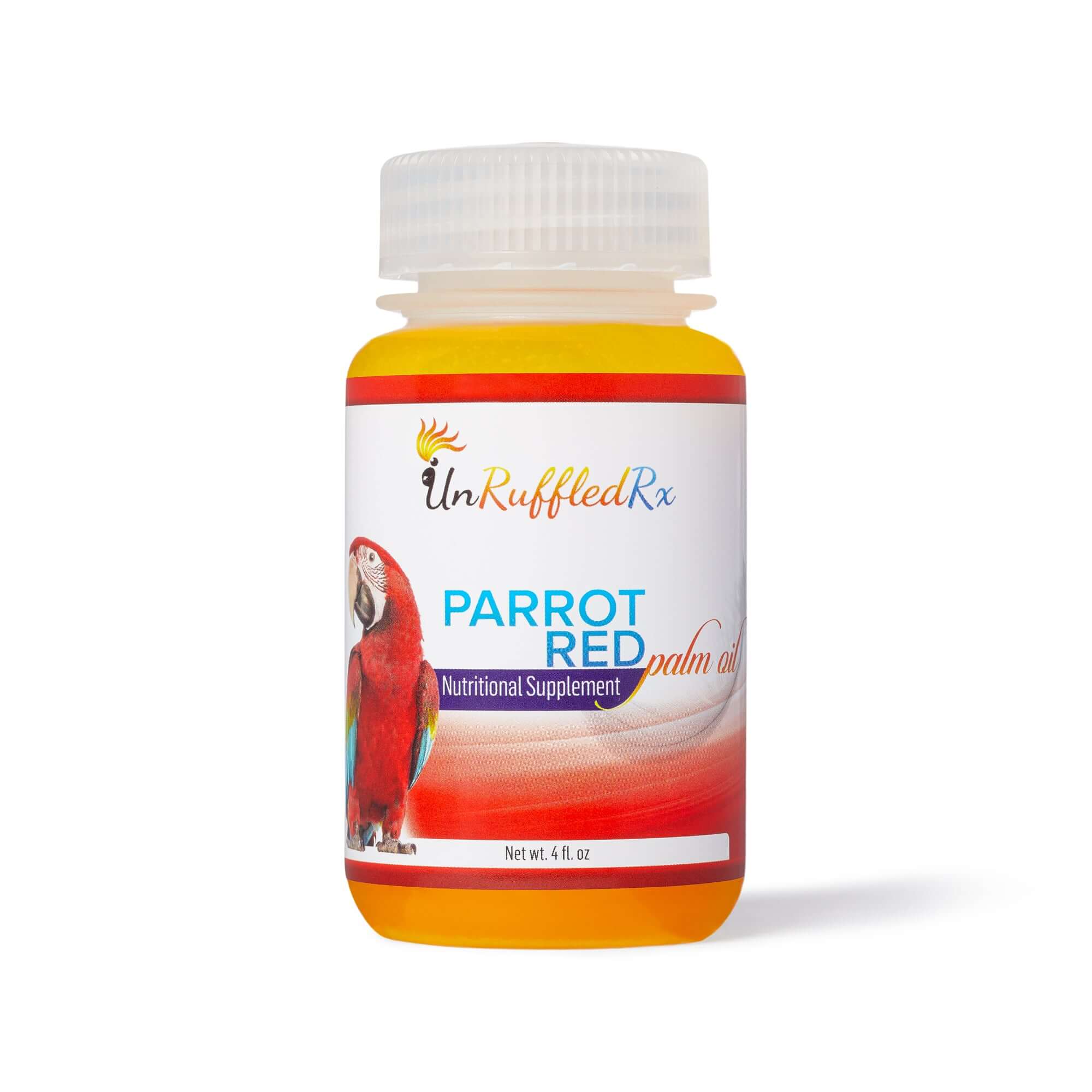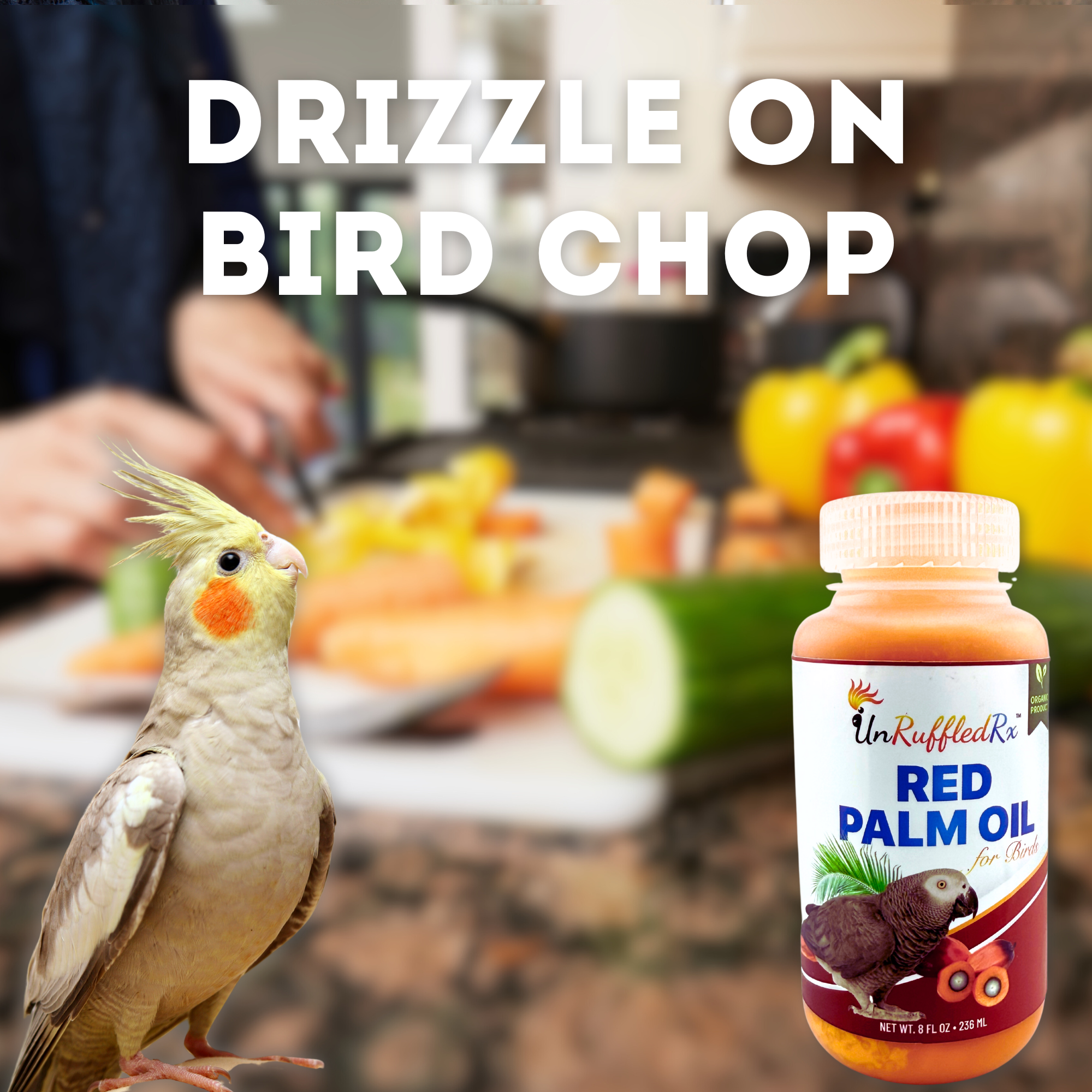- What is Molting in Parrots?
- Signs Your Parrot is Molting
- Understanding the Molting Cycle
- Common Molting Patterns by Species
- Molting vs. Feather Plucking
- Molting Bird Care
- Feed Right This Bird Molting Season!
- Advanced Molting Concepts
- FAQs: Answering Your Top Questions
Molting in parrots is a natural part of life every year, but it can be a tough time for both you and your feathered friend. As they lose their old feathers and grow new ones, parrots might seem a bit off—maybe they're uncomfortable, a little grumpy, or even acting differently than usual.
During this stressful time the need some extra nutrition to help with the growth of those bright, beautiful new feathers. They also need a stress-free environment and adequate sleep. This blog will walk you through everything you need to know to support your parrot during molting season, ensuring they stay healthy and happy throughout this transformative period.
What is Molting in Parrots?
Molting is when parrots shed their old feathers and grow new ones, typically occurring once or twice a year during the spring and fall. This process is crucial for parrots as it allows them to replace damaged or worn feathers, ensuring they maintain optimal flight and insulation - and, of course, their good looks to attract a mate. Regular molting is also a sign of good health and vitality in parrots, reflecting their body's ability to regenerate and maintain itself.
Signs Your Parrot is Molting
Top 5 Signs Of Birds Molting Feathers:
-
Feather Loss: Look for intact feathers in and around your parrot’s cage—normal molting feathers should be whole, with no chewing, blood in the shaft, or severe damage.
-
New Pin Feathers: Watch for new, spiky pin feathers emerging, which are covered in a protective sheath.
-
Itchiness: Your parrot might be scratching more due to the discomfort of new feathers growing.
-
Behavioral Changes: Molting can make your parrot grumpy or less active than usual.
- Increased Appetite: Expect a bigger appetite; molting requires extra nutrients to support new feather growth.
Typical Molting Seasons for Birds:
-
Spring: A common time for parrots to shed their winter feathers and prepare for warmer weather.
- Late Summer/Early Fall: A second molting phase can occur, helping parrots get ready for the colder months with a fresh set of insulating feathers.
Understanding the Molting Cycle
Molting in parrots begins when old feathers naturally reach the end of their life cycle and start to fall out. This doesn't happen all at once, so you might notice your parrot looking a bit uneven or scruffy. It’s crucial during this phase to keep their environment calm and stress-free, as they might feel more vulnerable without their full plumage.
As the molting progresses, new pin feathers, which are initially covered in a protective sheath, start to emerge. These pin feathers are rich in blood supply and sensitive to touch, so it’s crucial to handle your parrot gently. Your bird will likely increase preening during this stage, which helps remove the sheath and allows the new feathers to unfurl properly.
The final stage of the molting process sees the fully developed new feathers, giving your parrot a fresh and vibrant look. These new feathers are stronger and more robust, enhancing your parrot’s insulation and flight capabilities. By the end of the cycle, your parrot should appear healthy and radiant, ready to go about their daily activities with renewed vigor.
If your bird is experiencing an irregular molt, consult an avian or exotics veterinarian to rule out underlying health issues and ensure proper care.
Common Molting Patterns by Species
Molting patterns can vary depending on the species of the bird, as each species has its own genetically determined molting cycles. These patterns dictate whether birds experience partial or complete molts and also determine the specific times of the year these molts occur. Understanding the molting cycle of your specific bird species helps in providing appropriate care during these periods.
Additionally, the age of a bird also influences its molting patterns. Young birds, for example, undergo what is known as a "first molt," where they shed their juvenile feathers and grow in their adult plumage. Once birds reach maturity, their molting patterns stabilize and typically follow the cycle that is characteristic of their species. This age-related aspect of molting is crucial for bird owners to recognize to ensure their pets are healthy and well-cared for throughout their development stages.
Molting vs. Feather Plucking
Molting and plucking in birds are distinctly different processes, and it's crucial for bird owners to understand these differences to ensure the health of their pets. Molting is a natural, symmetrical loss of feathers that occurs seasonally and is part of the bird's normal growth cycle. On the other hand, feather plucking is often an abnormal behavior where a bird may remove its feathers unevenly, leading to bald patches. This behavior can be triggered by stress, medical issues, or environmental factors.
To help distinguish between molting and plucking, here's a simple table:
| Characteristic | Molting | Plucking |
|---|---|---|
| Symmetrical feather loss | Symmetrical feather loss | Asymmetrical |
| Seasonality | Seasonal | Any time of year |
| Body Location | Mild thinning all over | Bald patches |
| Behavioral Causes | Natural cycle | Often stress-related |
According to the Merck Veterinary Manual, molting is a physiological process that happens at specific times of the year and affects all birds. However, plucking is considered a behavioral issue, possibly indicative of stress, boredom, or underlying health problems that require further investigation and management by a veterinarian or an avian behaviorist. This distinction is critical for providing the right care and intervention for birds showing signs of distress.

Molting Bird Care
Supporting a parrot during molting is crucial as it can be a challenging time for your feathered friend. By providing comprehensive care that touches on nutrition, comfort, stress management, and rest, you can help ease their molting process. Here’s a detailed guide to ensure your parrot remains healthy and vibrant through this natural cycle:
🌿 Enhanced Nutrition
Molting isn’t just about shedding feathers—it’s about rebuilding them stronger than before! Your parrot needs high-quality protein for feather structure, plus a balanced mix of vitamins and minerals to support healthy regrowth. FeatherUp! delivers essential protein, vitamins A & E, omega-3s, and biotin, giving your bird everything they need for vibrant, resilient plumage.
💧 Soothing Misting
Keeping your parrot comfortable during molting is key. Regular misting or showers can help reduce the discomfort of growing new feathers. Using nutraceuticals like Aloe Vera Bird Spray, that has anti-inflammatory properties, can enhance hydration and provide soothing relief to irritated, inflamed skin, making the molting process so much more tolerable for your feathered friend.
🌤 Stress Management
Molting can be a challenging time for parrots, often leading to increased stress and anxiety. To support your bird during this period, it's essential to:
- Provide a calm environment
- Maintain consistent routines
- Offer gentle interactions
Incorporating calming supplements like UnRuffledRx Parrot Calming Formula, which contains natural calming ingredients such as L-Theanine and GABA, can further help in reducing stress-related behaviors. By combining environmental management with proper nutrition and supplementation, you can promote a smoother molting process for your feathered friend.
🌙 Sleep Equals Rejuvenation
Adequate sleep is essential during your parrot's molting period, as it helps their body rejuvenate and focus energy on growing healthy new feathers. To ensure your parrot gets the rest they need, it's important to manage their sleeping environment carefully. A quiet, dark place to rest without disturbances will help maintain their natural sleep cycles, crucial for their overall well-being during molting.
Lighting plays a significant role in regulating your parrot’s circadian rhythms, which are vital for healthy sleep patterns. Proper lighting that mimics natural sunlight can help regulate these rhythms, influencing not only sleep but also the molting process itself. Ensuring that your parrot is exposed to natural light cycles, or using full-spectrum lighting solutions, can significantly improve their sleep quality and support the molting process.
By focusing on these key areas, including the crucial role of lighting and circadian rhythms, you can provide the support your molting parrot needs to get through this period smoothly. A well-rested parrot is a happy parrot, and with a little extra care in managing their environment, your feathered friend will emerge from the molting season looking vibrant and healthy.
Feed Right This Molting Season for Birds!
🐦 Molting Support Recipes for Your Parrot
Choose your bird species to see a **custom molting support recipe** packed with the right nutrients for their needs.
🥗 Molting Meal for Small Hookbills
Supports: Feather regeneration, skin health, immune function
Ingredients:
- 2 tbsp cooked quinoa (pre-soaked in aloe juice)
- ¼ cup finely chopped steamed broccoli
- ¼ cup shredded carrots
- ¼ cup chopped spinach
- 1 tsp Omega Glow (blend of flax, hemp, chia seeds)
- 1 tsp finely chopped parsley
- 1 tsp UnRuffledRx Red Palm Oil (melted)
Instructions:
- Cook quinoa after soaking in aloe juice; let cool.
- Lightly steam broccoli until tender; let cool.
- Mix quinoa, broccoli, carrots, and spinach in a bowl.
- Stir in Omega Glow and parsley.
- Drizzle with melted Red Palm Oil and mix well.
- Serve fresh; refrigerate leftovers for up to 24 hours.
Feeding Instructions: Offer 3-4 times a week during molting, along with a varied diet.
🍠 Omega-3 Molting Superfood Mash
Supports: Skin hydration, feather regrowth, nervous system health
Ingredients:
- 1 cooked sweet potato, mashed
- 2 tbsp sprouted lentils
- 1 tbsp crushed walnuts
- ½ tsp ground flaxseeds
- ½ tsp turmeric powder
- 1 tsp UnRuffledRx Red Palm Oil
- ½ tsp bee pollen granules
Instructions:
- Cook and mash sweet potato; let cool.
- Mix in sprouted lentils, walnuts, flaxseeds, and turmeric.
- Stir in Red Palm Oil and bee pollen for extra nutrients.
- Serve fresh; refrigerate leftovers for up to 48 hours.
Feeding Instructions: Offer 2-3 times a week as a protein-boosting treat.
🥜 Protein-Packed Molting Nut & Seed Chop
Supports: Protein synthesis, feather structure, skin health
Ingredients:
- ¼ cup cooked quinoa
- ¼ cup finely chopped kale
- 2 tbsp raw almonds (crushed)
- 1 tbsp pumpkin seeds
- ½ tbsp hemp seeds
- ½ tsp ground cinnamon
- 1 tsp UnRuffledRx Red Palm Oil
Instructions:
- Cook and cool quinoa.
- Mix in kale, almonds, pumpkin seeds, and hemp seeds.
- Sprinkle cinnamon for antioxidants.
- Drizzle with Red Palm Oil and stir well.
- Serve fresh; refrigerate leftovers for up to 24 hours.
Feeding Instructions: Offer 2-4 times a week, alternating with fresh fruits and veggies.
📖 Want More Nutritious Bird Chop Recipes?
Get the eBook
Advanced Molting Concepts
Why Your Bird’s Molting Cycle Might Be Out of Sync
In the wild, birds rely on natural sunlight to regulate their biological rhythms. The changing daylight hours signal their bodies when to sleep, molt, and produce hormones.
But in captivity, pet birds live under artificial lighting, which disrupts their internal clock—especially the function of the pineal gland, a key regulator of sleep, molting, and hormone cycles.
🌞 How Indoor Living Disrupts a Bird’s Natural Rhythms
According to VCA Animal Hospitals, “In captivity, birds’ bodies can become unconsciously confused, as they are exposed to artificial light sources that we turn off and on at our convenience. Pet birds are not exposed to seasonal light and day length fluctuations in our homes that would mimic seasons.”
The pineal gland, located in the brain, is highly sensitive to light exposure. It works with the bird’s eyes to detect even subtle changes in UVA and UVB light from the sun. This gland helps control:
🪶 Molting cycles – Ensuring feathers are replaced at the right time
🧠 Hormone production – Regulating mood, behavior, and breeding instincts
💤 Sleep-wake patterns – Keeping a steady routine for rest and activity
However, in our homes, birds experience two major problems:

🚫 Modern Windows Block UVA & UVB Light
Sunlight contains essential UVA and UVB rays, which birds need for calcium metabolism, vitamin D production, and proper hormone regulation. However, standard glass filters out these wavelengths, leaving birds without the natural light cues their pineal gland depends on.
💡 Inconsistent Bird Light Schedules Confuse Their Internal Clock
Unlike the predictable sunrise and sunset in nature, indoor lighting varies depending on our schedules. Some days the lights are on early, some days they’re left on late. This disrupts the pineal gland’s ability to regulate molting, leading to:
❌ Irregular molting – Feathers fall out at the wrong time.
❌ Incomplete molting – Feathers don’t fully regrow, leaving patchy areas.
❌ Prolonged or infrequent molting – Some birds molt continuously, while others barely molt at all.
These disruptions also throw off hormone balance, leading to mood swings, reproductive behaviors, and stress-related feather plucking.
✅ How to Fix This: A Bird Light on a Timer
One of the simplest solutions is using a bird-safe UVA & UVB light on a timer to mimic natural daylight cycles. This helps restore proper pineal gland function and keeps molting on track.
☀️ Provides steady UVA & UVB exposure – A high-quality bird light ensures your bird gets the essential wavelengths blocked by windows, supporting feather health and hormone balance.
🪶 Encourages proper molting – A consistent light schedule signals to the pineal gland when to trigger molting, preventing excessive feather loss or patchy regrowth.
🧠 Balances hormones & mood – A stable light cycle keeps hormone levels in check, reducing aggressive or anxious behavior.
😴 Promotes a healthy sleep-wake cycle – Birds need 12–14 hours of uninterrupted sleep in darkness. A scheduled light system helps reinforce a predictable bedtime and wake-up routine.
By recreating natural light conditions, we can support our birds’ biological rhythms, ensuring they stay healthy, happy, and fully feathered year-round.
FAQs: Answering Your Top Questions
What is molting in parrots, and why does it occur?
Molting is the natural process where parrots shed old feathers and grow new ones. This keeps their plumage healthy for flight, insulation, and protection. Molting is triggered by seasonal changes, hormonal shifts, and light exposure.
How often do parrots molt, and how long does the process last?
Most parrots molt once or twice a year, with the process lasting 5-12 weeks. Smaller birds like budgies and cockatiels may molt more frequently, while larger parrots like macaws and African greys experience a longer, slower molt.
What are the signs that my parrot is molting?
Common signs of molting in parrots include increased feather shedding, the appearance of pin feathers (small, waxy sheaths covering new feathers), more frequent preening and occasional scratching, temporary mood changes like being quieter or irritable, and a fluffier appearance as new feathers emerge.
How can I support my parrot during the molting process?
To support your parrot during molting, increase protein intake with foods like quinoa, sprouted seeds, and eggs. Provide daily misting or warm baths to soften pin feathers. Offer a variety of fresh vegetables for essential vitamins. Use Red Palm Oil or Omega-3 supplements to promote feather health. Ensure proper sleep and light exposure to regulate the molting cycle.
Is molting uncomfortable or painful for parrots?
Molting is not painful, but it can be uncomfortable. New feathers push through the skin in keratin sheaths, causing itchiness. Gentle head rubs (if your bird allows), misting, and proper nutrition can ease the discomfort.
Can molting affect my parrot's behavior or mood?
Yes! Many parrots become quieter, moodier, or less active during molting. Some birds may prefer less handling due to sensitive pin feathers, while others become clingier for comfort. These changes are temporary.
Are there specific dietary requirements for parrots during molting?
During molting, parrots need more protein to support feather regeneration. Foods like sprouted seeds, quinoa, and cooked eggs provide necessary amino acids. Vitamin A-rich vegetables, such as carrots, sweet potatoes, and leafy greens, enhance skin and feather health. Healthy fats from flaxseeds, hemp seeds, and Red Palm Oil keep feathers strong and shiny. Omega-3 sources like walnuts and chia seeds help reduce inflammation and support new feather growth.
When should I be concerned about my parrot's molting patterns?
Be concerned if your parrot shows bald spots, molts outside of normal seasonal patterns, has continuous or absent molting cycles, or exhibits excessive feather loss accompanied by plucking, stress, or aggression. These can indicate nutritional deficiencies, hormonal imbalances, or underlying health issues. If any of these symptoms occur, consult an avian vet for evaluation.
In Conclusion...
Molting is a natural and essential part of your parrot’s life, ensuring their feathers remain strong, healthy, and fully functional. While it can be an uncomfortable time for your bird, understanding the molting process and providing the right nutrition, hydration, and care can make a significant difference. From recognizing the signs of molting to offering high-protein foods, supplements, and proper lighting, you can help your parrot transition through this phase smoothly.
By following the tips in this guide, you’ll ensure your feathered companion stays comfortable and supported throughout their molt. If you ever notice unusual feather loss, persistent molting, or behavioral changes, consult an avian vet to rule out underlying health concerns. With the right care, your parrot will emerge from molting with vibrant, healthy feathers—ready to show off their beautiful plumage once again!
Related Posts
The Ultimate Guide To Bird Full Spectrum Lights
The Molting Process in Parrots
7 Simple Steps To Take Right Now To Help Your Molting Parrot
Why Do My Bird's Feathers Look Bad? Feather Health 101
Help! My Bird Is Losing It's Feathers
References
https://www.nigms.nih.gov/education/fact-sheets/Pages/circadian-rhythms.aspx
VCA Hospital:https://vcahospitals.com/know-your-pet/molting-in-birds
Burroughs, D. (2025, February 3). The ultimate guide to bird full spectrum lights. BirdSupplies.com. https://birdsupplies.com/blogs/news/the-ultimate-guide-to-bird-full-spectrum-lights
Foster, M. (1975). The Overlap of Molting and Breeding in Some Tropical Birds. The Condor, 77(3), 304-314. doi: 10.2307/1366226
Lesher, S., & Kendeigh, S. (1941). Effect of Photoperiod on Molting of Feathers. The Wilson Bulletin, 53(3), 169-180.
Reedy, V., Reedy, V., & Sharma, S (2020). Physiology, Circadian Rhythm. https://www.ncbi.nlm.nih.gov/books/NBK519507/
Rich, G., Hess, L., & Axelson, R. (n.d.). Molting in birds. VCA Animal Hospitals. Retrieved [date], from https://vcahospitals.com/know-your-pet/molting-in-birds
Diane Burroughs, LCSW is a licensed psychotherapist trained in ABA therapy techniques. She specializes in avian anxiety disorders and is certified in Nutrition For Mental Health. Diane has written a number of bird behavior books and she offers behavior consultations. She's developed a range of UnRuffledRx Science-backed Parrot Wellness Supplies.
Diane's products have been featured in the Journal of Avian Medicine and Surgery and at Exoticscon, a conference for exotic pet veterinarians. Her bird collars & supplements are stocked in avian vet clinics and bird stores throughout the US. With over 30 years in the field of behavior, Diane has created thousands of successful individualized behavior plans that help pets thrive.
TAGS: #MoltingInParrots #MoltingSeasonForBirds #MoltingBirdCare
SHARING IS CARING! PLEASE SHARE ON YOUR FAVORITE SOCIAL MEDIA NOW!






